Identification of Bird Nest:
1. Appearance – All our bird nests have net weight near to the stated value, as our bird nests are kept and sold dry with low moisture levels. This is evident from the fact that they are dry and brittle enough to break, as compared to those available on the market that will not break easily and hence have a much lower net weight that what is stated. Our top grade bird nests have a complete nest shape with a thin base, and have natural gaps between the filaments, without the use of any glue. Low grade bird nests have incomplete nest shape and use bird nest filaments or even glue to fill up the incomplete nest shapes and the gaps within the broken bird nest.
Our premium bird nest has a thin base and do not use filaments to fill in the small natural gaps of the bird nest. Low grade bird nest that use filaments to fill in the large gaps of their incomplete nest has an opaque appearance and has a thick base.
2. Color – Our bird nest do not use any bleach and have a natural pearl white color. Poor grade bird neat use bleach and chemicals to remove the feathers and other impurities and this destroy the nutritional value of the bird nest and are harmful to health. As the diet of each swiftlet differs, the color of our authentic bird nest also differs from one another.
3. Fragrance – Our top grade bird nest has a natural refreshing fragrance, as compared with low grade bird nest which has a sour taste and synthetic chemical odor.
4. Soaking – After soaking, our bird nest will expand by 6-8 times, and the water will be clear. The individual filaments are visible with the naked eye, and are all transparent, distinct and supple. Low grade bird nest will cause the water to be murky, and the filaments are not supple and will break easily and dissolve away.
5. Taste – After cooking, our bird nest filaments are thick and translucent with natural fragrance. They have a smooth and refreshing taste.
印度尼西亚位于亚洲大六与大洋洲之间,横跨赤道,由17506个岛屿组成,素有“千岛之国”的美誉,除了风情万种的巴厘岛,还有物産丰富的苏门答蜡岛。
苏门答蜡是印度尼西亚最大的岛屿,这里属典型的热带雨林气候,终年高温多雨,湿度大,河流众多,水量充沛,吸引了美丽的金丝燕前来筑巢,是印尼燕蜗的主産地。棉兰,印度尼西亚北苏门答蜡首府,人口超过200万,是印尼第3大城市,是印尼燕蜗産地最佳的地区。由于生态环境很好,土壤极其肥沃,野生植物繁多且日照时间很长,使得苏门答蜡棉兰的燕蜗矿物质等营养含量尤其丰富。
棉兰燕窝的産量占整个印度尼西亚的六成。在这里的小镇里,随处都可见到各式各样的燕屋。燕屋的形状和中国乡村还没装修外牆的自建村屋无异,大都是三四层。而区别是,燕屋除了有一个狭小的门供采集燕窝的工人进出外,基本上门窗都是封闭的。下面参观下我们传统燕窝在印尼棉兰自家的燕屋。
Harvesting & Preparation:
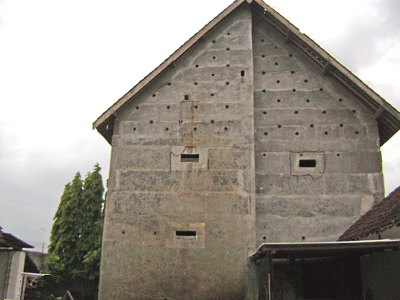
Indonesia is situated between the Indian Ocean and the Pacific Ocean, straddling the equator, and consists of more than 17000 islands. Sumatra is Indonesia’s largest island, with a warm and humid tropical climate, high annual rainfall, resulting in a vast river system and ample water supply. This is the ideal living condition for tree swiftlets. As such, 80 % of the world’s bird nest are from Sumatra, Indonesia.
The city of Medan in Northern Sumatra has a population of 2 million and is Indonesia’s third largest city. The area around Medan has a rich ecosystem, with fertile lands resulting in vast forests and is the ideal breeding grounds for tree swiftlets. As such, Medan accounts for 60% of the total production of bird nest in Indonesia.
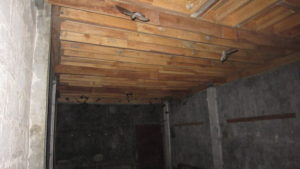 Medan has a striving bird nest breeding and harvesting economy and swiftlets houses of varying designs can be seen. In general, they looked like traditional three to four storeys Chinese village houses with unfurnished external walls. There are no doors or windows, except a small entrance for workers. Small holes are made in the walls for the swiftlets to enter and also for ventilation. Below are the photos and description of one of our swiftlet houses in Medan.
Medan has a striving bird nest breeding and harvesting economy and swiftlets houses of varying designs can be seen. In general, they looked like traditional three to four storeys Chinese village houses with unfurnished external walls. There are no doors or windows, except a small entrance for workers. Small holes are made in the walls for the swiftlets to enter and also for ventilation. Below are the photos and description of one of our swiftlet houses in Medan.
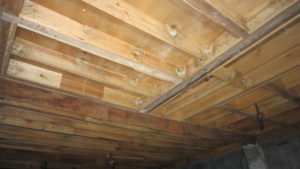 Swiftlets are migratory birds and are not tamed. The swiftlet house only served to attract them to build their nest within it. No food is provided for the swiftlets and they venture out during the day to hunt for insects, returning at night to roost. It is dark inside the house, with recording of swiftlets’ high pitched calls being broadcast constantly to attract them. The interior walls are barren with wooden beams crisscrossing the ceilings for the swiftlets to build their nests. The air is kept well ventilated to prevent the growth of fungus, which will prevent the proper and firm attachment of the nests to the wooden beams.
Swiftlets are migratory birds and are not tamed. The swiftlet house only served to attract them to build their nest within it. No food is provided for the swiftlets and they venture out during the day to hunt for insects, returning at night to roost. It is dark inside the house, with recording of swiftlets’ high pitched calls being broadcast constantly to attract them. The interior walls are barren with wooden beams crisscrossing the ceilings for the swiftlets to build their nests. The air is kept well ventilated to prevent the growth of fungus, which will prevent the proper and firm attachment of the nests to the wooden beams.
金丝燕属于候鸟,不能被驯养,只能靠建造燕屋来吸引其入内筑巢。燕屋不提供食物,燕子白天出去野外觅食,太阳下山后飞回来休息。走进一间燕屋,第一感觉是光线很暗,到处都是屋内安置的扬声器发出的燕鸣的录音以及燕子粪便的味道,这是燕屋引燕的必备。燕屋每一层四壁都是光秃秃的水泥牆,只有天花板上纵横交错钉著10多厘米宽的木板,称爲殖窝板。金丝燕就把窝筑在殖窝板上。如果燕屋内的空气不流通,殖窝板就会潮湿长霉。这样就会影响金丝燕的唾液没有办法良好的凝固,从而影响燕窝的质量。
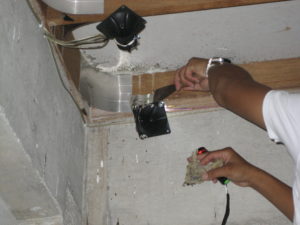 There are various misconceptions that the harvesting of bird nest will be harmful to the swiftlets. This is indeed a myth as adult swiftlets do not use the nest to roost. They perched onto the walls to rest and roost. The nest is only used for the incubation of the eggs and for the rearing of their young. Each nest will typically hold 2 eggs and the nest are constructed using the dried up saliva of the adults. The eggs take 3 weeks to hatch and the young take 2 months to be fully fetched and leave the nest. Only when the nest is abandoned, will they be harvested by the workers.
There are various misconceptions that the harvesting of bird nest will be harmful to the swiftlets. This is indeed a myth as adult swiftlets do not use the nest to roost. They perched onto the walls to rest and roost. The nest is only used for the incubation of the eggs and for the rearing of their young. Each nest will typically hold 2 eggs and the nest are constructed using the dried up saliva of the adults. The eggs take 3 weeks to hatch and the young take 2 months to be fully fetched and leave the nest. Only when the nest is abandoned, will they be harvested by the workers.
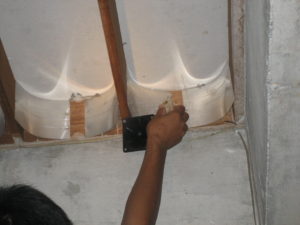 After the bird nest is harvested, there will be fine feathers within the bird nest filaments. The nest is made from the saliva of swiftlets and hence, will contain small food residues within the nest filaments. All these impurities have to be cleared and the nest has to be cleaned.
After the bird nest is harvested, there will be fine feathers within the bird nest filaments. The nest is made from the saliva of swiftlets and hence, will contain small food residues within the nest filaments. All these impurities have to be cleared and the nest has to be cleaned.
Raw bird nest that are harvested contains feathers and other impurities.
有人说养燕业铲掉燕子住的地方是破坏燕子的生态,这是理解错了。其实成年的金丝燕是不会住在巢内的,它们利用向前伸的前爪,抓著落脚点栖息的,哪怕睡觉也是只能用爪子攀岩在某样东西上,因此不用巢。金丝燕是爲了産卵才筑巢的,一只金丝燕每次産蛋就只有2枚,只有怀有宝宝的时候金丝燕才能舌沟下才能分泌出这种特殊的唾液。孵蛋大概需要三个星期,等2个月小燕子能飞行后这个窝也就被丢弃了,这时候就是到该采燕窝的时候了。铲燕窝只是铲掉金丝燕不用的巢。
当燕窝被采摘下来的时候,中间夹杂著很多羽毛,一般都会经过处理才出售。因爲燕窝是利用金丝燕的唾液造出来的,燕子吃剩的一些食物残渣都会在燕巢里,所以一定要经过除毛的工序。
Traditional method of cleaning bird nest
Soaking —— Washing with soft brush —— Removal of feathers manually —— Maintaining the shape —— Drying
Our bird nest is 100% cleaned by manual labour and no machines are used in the process. We follow the most traditional method of cleaning so that the bird nest will be cleaned thoroughly and the highest nutritional value of the bird nest will be preserved.
After harvesting, the bird nest will be soaked for 30 min. It will then be cleaned gently with a soft brush for larger impurities such as feathers. A nest shaped wire mesh will be used to hold the bird nest and to maintain its natural shape, while our workers will picked away the impurities using pincers. The cleaning processes have to be completed within one cycle of soaking so as to maintain the shape of the bird nest. Our workers are mostly young females in their twenties, as they have better eyesight and are more meticulous and gentle. On average, one worker can only clean 15-20 nests per day. The cost of using manual labour in the cleaning process is higher than using chemicals or bleach. These will dissolve away the impurities but the nutritional value of the bird nest will be reduced and the chemicals and bleach are also harmful to health. So it is advisable not to buy cheap bird nest as the cleaning process could have used chemicals and bleach to save labor costs. The bird nest is then placed to dry naturally for 24 hours.
浸泡—————洗刷————挑毛————推磨————风干
我们的燕窝不采用机洗,全部采用古法手洗,是最初的洗燕窝方式,非常传统也非常干淨,最大程度上保留了营养。采摘下来的燕窝要先喷三成水,等待浸泡30分锺。接著将燕窝放于专用的清洗盒中用手轻轻搅动和漂洗,用牙刷刷掉大个的羽毛,去除浮毛等杂质。要把燕窝里的杂质仔细的清理掉,需要一个网状容器弄成窝的形状,再用两个架子夹起来,就可以开始用专用的不鏽钢镊子手工把幼小的毛挑出来了。
手工挑毛的过程,要求精细的挑选燕毛,并在一次泡水的限时内完成,否则燕窝会越来越失去粘性。而手工挑毛的工人基本上都是20岁左右年轻女生,她们的眼力好,而且也比男生细心。一般,一天每人只能挑8-10个燕盏左右。纯手工挑毛的燕窝进货价格比漂白过的还要高,因爲漂白用的化学试剂能把燕窝中里面的小细毛给溶掉,所以人工费用低很多 。燕窝本身就是个养生食品,所以买燕窝不要就贪图便宜,盲目的去买,如果漂过的燕窝,里面含有化学成分,吃了反而对自己的身体更不好。挑选好的燕窝,放在特定的网子里面风干,一般要自然吹干24小时。

